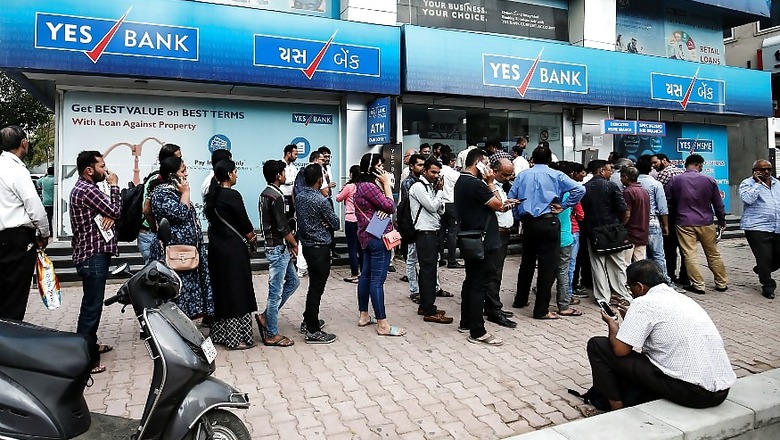
views
Even as Yes Bank's capital position has improved considerably after fund infusion under its reconstruction plan, it will require an additional Rs 9,000-Rs 13,000 crore in the next 1-2 years, ratings firm ICRA said on Wednesday.
After the equity infusion and write-down of the AT-I bonds, Yes Bank Ltd's (YBL) capital ratios are likely to improve, with common equity tier-1 (CET-1) and tier-1 at 7.6 and 7.8 per cent, respectively, and capital-to-risk weighted assets ratio (CRAR) of more than 9 per cent, ICRA said in a release.
"As the regulatory norms require banks to maintain a CCB (capital conservation buffer) of 2.5 per cent as on March 31, 2020, ICRA expects additional capital requirements of nearly Rs 9,000-Rs 13,000 crore over the next 1-2 years," the ratings firm said.
However, the bank has not paid a coupon, which was due on the Basel-II Tier-1 Bonds on March 5, 2020, as the same is subject to approval from the Reserve Bank of India (RBI).
The ratings firm has upgraded various bond programmes of Yes Bank and has placed a ratings watch on them with developing implications.
On the ratings upgrade rationale, it said ICRA has factored in the removal of moratorium on the bank on March 18, infusion of a Rs 10,000-crore equity capital, reconstitution of a new board and write-down of additional tier-1 bonds.
"ICRA derives comfort from the new shareholding and the reconstitution of the bank's board. Along with the equity infusion of Rs 10,000 crore, YBL's Basel-III Additional Tier-1 (AT-I) Bonds of Rs 8,415 crore have been written down.
"This has helped improve the Tier-1 capital ratios above the regulatory requirements (excluding CCBs)."
It said the bank may witness deposit withdrawals for which liquidity support is to be provided by domestic financial institutions and the Reserve Bank of India, if required.
The ratings firm said it has upgraded the ratings without the passage of the 90-day curing period as an exception in this case, in light of the reconstruction of the bank under Section 45 of the Banking Regulation Act, 1949.
The servicing of the Basel-II Lower Tier-II Bonds and infrastructure bonds is not subject to any capital ratios and profitability. However, the Basel-III Tier-II Bonds are expected to absorb losses once the point of non-viability (PONV) trigger is invoked, it said.
On the bank's credit challenges, it said the deposit base declined further to Rs 1.37 lakh crore and following the removal of the moratorium, it is likely to reduce further in the near term.
The bank's total deposit base reduced to Rs 1.66 lakh crore as on December 31, 2019, from Rs 2.09 lakh crore as on September 30, 2019.
Among others, requirement of a high capital maintenance as high credit costs led to high losses in the third quarter ended December of this fiscal and likelihoods of operating profitability to remain under pressure amid declining scale of operations are also challenges, it said.
On positive triggers, ICRA will monitor the second phase of capital raising by the bank.
"ICRA could revise the outlook to positive or upgrade the ratings if YBL is able to raise sufficient capital to meet the regulatory capital ratios (including CCB) on a sustained basis," it said.
Moreover, the stabilisation of the deposit base, continued improvement in the customer franchise by improving the share of retail deposits, and the ability to generate capital internally will be key triggers.
On negative triggers, a sustained decline in the scale of operations, leading to a delayed improvement in the operating profitability, and the inability to reduce reliance on wholesale funding over the medium term will be key negative triggers, ICRA said.
"YBL's inability to raise sufficient capital to meet the regulatory ratios (including CCB) on a sustained basis will also be a credit negative," it said further.



















Comments
0 comment